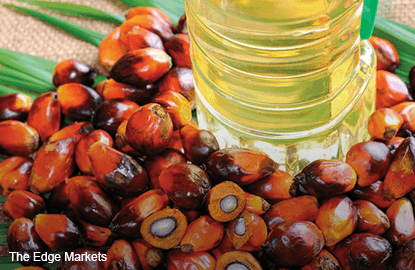
KUALA LUMPUR (March 6): Palm oil bears are growing in confidence this year with production in the two largest growers expected to surge as plantations recover from the scorching effects of El Nino. The factors that may stand in the way, however, include Donald Trump and a possible early return of El Nino.
The quarterly average price of the oil used in everything from lipstick to chocolate is expected to slide about 12% by the fourth quarter. That would end a bull run that gave the commodity its biggest annual gain in six years.
It all depends on exactly when the predicted production surge in Malaysia and Indonesia starts. That will be a key focus as traders and executives gather in Malaysia’s capital for an annual palm oil conference starting Monday. The bullish factors they will be watching for include the possible El Nino, as well as biodiesel policy decisions from Indonesia and the Trump’s administration in the U.S., according to Oscar Tjakra, senior analyst at RaboResearch Food & Agribusiness in Singapore.
Futures in Kuala Lumpur, the global benchmark, are forecast to average at 2,650 ringgit (US$595) a metric ton in the fourth quarter from 3,020 ringgit so far in the first, according to the median estimate of analysts compiled by Bloomberg. Olam International Ltd., one of the world’s largest food traders, is among those predicting the fall, saying in earnings last week they are bearish on palm oil from the late second quarter onward.
“Sluggish palm oil demand and expectation that palm production cycle will shift to a seasonal uptrend from March continue to provide downward pressure for palm oil prices,” RaboResearch’s Tjakra said in emailed responses to questions. Palm oil is expected to see “minimal harvest disruptions and logistical issues for the rest of the first half,” he said.
“There are still, however, uncertainties about weather in the second-half of 2017,” he said “El Nino could re-emerge.”
El Nino Comeback
Forecasters are predicting El Nino may make a comeback less than a year, after the world said goodbye to one of the strongest of the weather events on record. Recent observations suggest the likelihood of El Nino in 2017 has risen to about 50%, according to Australia’s Bureau of Meteorology on Feb 28. Malaysia’s Meteorological Department said Feb 20 that some models anticipate the onset as soon as March to May.
If El Nino develops in the second half of the year, the impact on fresh fruit bunches will be felt six to nine months later and that would affect production in 2018, Rabobank’s Tjakra said.
“It depends on how strong it is,” said Franki Anthony Dass, managing director of plantations at Sime Darby Bhd., the world’s biggest grower of palm oil by acreage. “If the El Nino appears and it affects production, prices will go up,” Dass told Bloomberg in Kuala Lumpur on Feb 27, while adding that the impact may not be as severe as last year’s “super El Nino.”
Other upside risks to palm oil prices include a sup-par monsoon in India this year, which could hamper domestic oilseed production and boost vegetable oil imports towards the yearend, said Aurelia Britsch, head of commodities at BMI Research in Singapore. India is one of the biggest palm oil importers.
“Inclement weather in the Americas could also damage the upcoming soybean crop and push up palm oil prices,” she said in a March 1 email.
Futures in Kuala Lumpur closed at 2,863 ringgit (US$643) a metric ton on Friday, taking their loss this year to 7.9% this year.
Trump, Biofuel
Industry participants are also keeping a close watch on how President Trump will address renewable fuel regulations in the United States. The U.S. biodiesel mandate has the potential to be a “ game changer on the bullish side" for soybean oil futures, according to Godrej International’s Dorab Mistry. That “should allow palm prices to recover from their recent sell-off,” Mistry said in an email response to questions by Bloomberg.
Palm oil futures in Malaysia jumped on March 1, after Trump was said to be deliberating a plan to overhaul the federal policy on renewable fuel standards. The current structure puts the onus on refiners and importers to meet annual quotas for using biodiesel and ethanol — refiners that do not have infrastructure to blend in the biofuels themselves must buy credits to comply.
“If Trump’s administration decision on Renewable Fuel Standard is in favour of biodiesel mandate, such as reversing EPA’s decision on Argentine biodiesel imports to the U.S or changing blenders tax credit to domestic production credit, demand for domestic soyoil will increase and this will provide support for palm oil prices,” RaboResearch’s Tjakra said. There will be additional pressure to palm prices if the decision is not in favour of a biodiesel mandate, he said.
Still, Trump’s policies may also keep fossil fuel prices range-bound, Mistry said. Trump is friendly toward coal, mineral oil and gas, and higher production will keep Brent oil prices within the US$50 to US$60 range, he said.
“That will automatically keep a lid on discretionary demand for palm biodiesel,” Mistry said. “The challenge will be for Indonesia to somehow increase its consumption of palm biodiesel.”
Mistry, alongside other leading analysts, including LMC International Lt.’s Chairman James Fry and Oil World executive director Thomas Mielke will be presenting at the Malaysian conference.